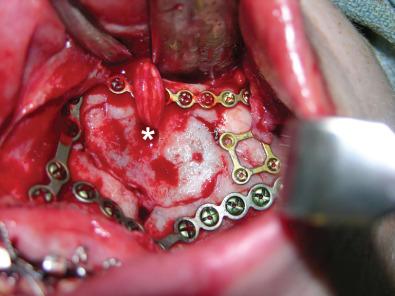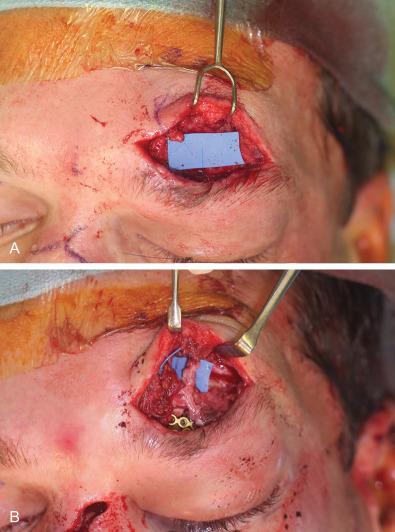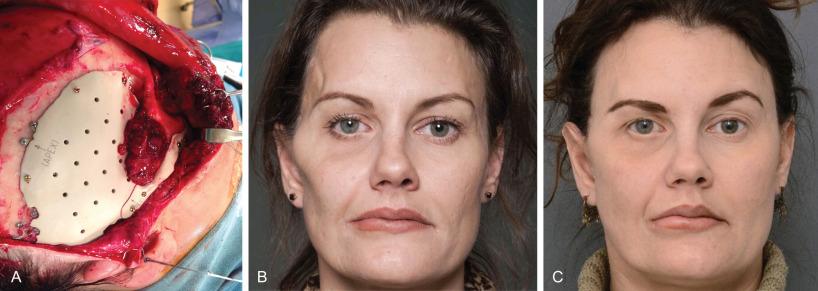Physical Address
304 North Cardinal St.
Dorchester Center, MA 02124
Despite the craniofacial surgeon's best efforts to minimize soft tissue disruption, secondary scarring and deformity are not infrequent following the treatment of facial injuries. These deformities may arise as a consequence of the trauma itself or may be an iatrogenic consequence of the exposure and soft tissue disruption required for facial fracture fixation. Such scarring and deformity are both functionally and psychologically disturbing to the patient and often need to be addressed surgically. This is especially true in the head and neck region, where anatomical distortions measured in millimeters can be visible at conversation distance. The purpose of this chapter is to describe these deformities, how to avoid them through modified surgical approaches, and the techniques used for correcting them secondarily.
Prevention of secondary deformity is the primary long-term goal of treating acute facial injuries. However, as outlined in the previous chapter on primary repair of soft tissue injuries, the need for secondary revision is often unavoidable. When the zone of injury is extensive, healing and soft tissue viability become unpredictable, limiting the reconstructive options available in the acute period. In addition, patients may be too unstable to receive an optimal primary reconstruction. In these cases in which the patient requires stabilization first and foremost, the immediate surgical goal is confined to soft tissue closure and coverage of vital structures and bone.
Soft tissue disruption is often associated with underlying skeletal injury in need of open reduction and internal fixation. The surgical approaches to the craniofacial skeleton required for fixation carry with them a predictable risk of iatrogenic secondary deformity. Ptosis of soft tissues, transection or disinsertion of muscles, atrophy of fat pads, alopecia, and nerve damage are just some of the postoperative complications attributed to craniofacial exposures. These complications arise from the required soft tissue dissection, subperiosteal degloving, and subsequent scarring.
With the advent of plate and screw osteosynthetic systems for the craniofacial skeleton, internal fixation of facial fractures followed the principles of extensive fracture exposure in order to maximize rigidity and minimize interfragmentary movement. This principle was followed even in cases of low energy trauma with simple fracture patterns and in spite of a lack of understanding of the physiological loading of the craniofacial skeleton. Over time it has become clear that the complications arising from the soft tissue disruption and biological compromise inherent in this aggressive approach offset the benefits of rigid fixation. This has lead to the paradigm for facial fracture stabilization changing over the last few decades, with a shift from stabilization by maximal rigidity to stabilization using the minimum stiffness required to achieve bone healing, consequently better preserving biology, which in turn has led to a reduction in complication rates.
This approach is also less likely to disrupt soft tissue support structures and hence result in less secondary soft tissue deformity. As an example, lower eyelid incisions, a significant source of secondary soft tissue deformity, can often be avoided in the fixation of low-energy zygoma fractures not requiring orbital floor exploration. Mechanical stabilization of these fractures can effectively be achieved with fixation at the zygomatic–frontal fracture and/or at the zygomatic–maxillary buttress. Furthermore, the inferior orbital rim fracture site can be readily visualized from the upper buccal sulcus incision ( Fig. 3.3.1 ), precluding the need for the lower lid exposure for the purposes of ensuring an adequate reduction in cases where orbital floor exploration is not necessary.

Complications can also arise from the fixation hardware itself, with visibility and prominence, loosening, pain and infection being common reasons for secondary removal. Complete mitigation of hardware-related complications is impossible, which again emphasizes the need to achieve stable bony fixation with the least amount of hardware possible.
Comprehensive assessment should begin with a history documenting details of the initial injury and primary treatment. The timeline of secondary interventions, both surgical and nonsurgical, should also be documented. The patient's chief concerns need to be thoroughly explored and placed in order of priority. Risk factors for poor soft tissue healing such as diabetes, smoking, use of glucocorticoid steroids, and personal or family history of keloid scarring need to be identified.
Examination should assess for facial asymmetries, tissue deficiencies, and distortion of key structures and landmarks. Both static and dynamic asymmetries should be assessed along with function of all divisions of the facial nerve. If bilateral injuries are present, the use of preinjury photographs will assist in this process. The quality of the soft tissues should then be assessed noting all scars and their characteristics including pigmentation, vascularity, pliability, and height. For each soft tissue deformity an attempt should be made to determine the underlying cause. This can be as simple as the incorrect alignment of key landmarks during the primary repair, or in complex cases, a combination of malalignment, abnormal scarring, tissue deficiency, and bony malunion. The contribution of each of these factors to the deformity must be carefully considered to appropriately plan for stepwise correction. Assessment of the underlying facial skeleton should determine if accurate reconstruction has been achieved, and if not which areas are malunited, deficient or unstable. Temporal and cheek contour deformities are then examined in relation to the facial skeleton. The mobility of displaced soft tissues should be assessed to determine if they are fixed or passively correctable.
A cranial nerve examination should be performed with particular attention to the facial and trigeminal nerves. The power of each muscle group and the presence of synkinesis should be noted along with any functional issues such as corneal exposure, nasal airway obstruction, and oral incompetence. Dysaesthesias and painful neuromas can result from damage to any of the trigeminal nerve branches. The most common cause of posttraumatic trigeminal nerve injury is compression followed by partial nerve laceration and, infrequently, complete laceration. Operative decompression and neurolysis at the foramen or fracture site is effective in most compressive injuries. Complete lacerations require microsurgical repair, and may require autologous nerve grafting if the repair is delayed.
Finally, a set of standard facial photographs should be obtained for documentation and operative planning. Three-dimensional (3D) facial scanning technology is also becoming more accessible for use in preoperative planning and documentation. These techniques have the advantage of allowing computer-based simulation of corrective procedures and development of 3D templates to aid in soft tissue reconstruction.
Fig. 3.3.2 demonstrates a case of posttraumatic dysaesthesia of the supraorbital nerve following laceration and fracturing of the supraorbital rim. Laceration of the nerve went unrecognized during primary soft tissue repair and open reduction internal fixation. Secondary exploration was carried out revealing the nerves’ discontinuity and direct microsurgical repair was performed with eventual resolution of symptoms.

In evaluating significant secondary soft tissue deformities, computed tomography (CT) examination should be routinely performed to assess the adequacy of skeletal reconstruction, including symmetry and position of key segments. High resolution images are useful for preoperative planning of skeletal corrective procedures, including osteotomies, bone grafting, and customized implants. Soft tissues can also be assessed through CT providing information on their quantity, quality, and location relative to bony structures. Axial images best demonstrate the soft tissues of the midface and their relation to the infraorbital rim. Coronal slices are best for evaluation of the temporalis muscle and overlying fat pad.
A specific sequence of reconstruction provides optimal correction of posttraumatic facial soft tissue deformities. Skeletal deformities are corrected first, as an accurately reconstructed facial skeleton is required for the correct repositioning or reconstruction of soft tissues. Defects and contour irregularities of the facial skeleton should be corrected with bone graft, free tissue transfer or alloplastic implants depending on the clinical situation. Grossly malpositioned bony segments should be osteotomized and repositioned.
With skeletal correction complete, the deformity and deficiency of the soft tissues can be appropriately addressed. Soft tissues should be fully freed from any points of adhesion to allow for tension-free resuspension. Bone suture anchors are useful for fixation of soft tissues. Key soft tissue landmarks such as the canthi and oral commissures are carefully repositioned with anchoring of ligamentous attachments to bone, and resuspension of muscles.
Finally, residual soft tissue deficiencies are corrected with submuscular or subcutaneous volume augmentation.
Fig. 3.3.3 demonstrates a patient following a motor vehicle collision resulting in a compound skull fracture and loss of the right zygomatic arch. Initial treatment of the patient's skeletal defects was limited due to their critical condition and severe neurotrauma. Following the acute phase, staged secondary reconstruction was planned. First, a custom made PEEK implant to address the cranial and zygomatic defects was designed based on CT imaging. Following skeletal correction, the true soft tissue deficit in the temporal fossa became apparent and could be appropriately addressed. Serial fat grafting was then employed to complete the soft tissue reconstruction.

Corrective techniques for soft tissue contour deformities include autologous fat grafting, synthetic fillers, alloplastic implants, and occasionally free tissue transfer. Selecting the appropriate technique requires consideration of amount of volume loss, quality of the overlying skin and soft tissues as well as the defect location. Small volume deficiencies are readily corrected using autologous fat grafting, while moderate-sized defects may require serial grafting. Hyaluronic acid-based synthetic fillers can be useful for small volume soft tissue augmentation, however the temporary nature of these products makes them less ideal in this patient population.
Become a Clinical Tree membership for Full access and enjoy Unlimited articles
If you are a member. Log in here